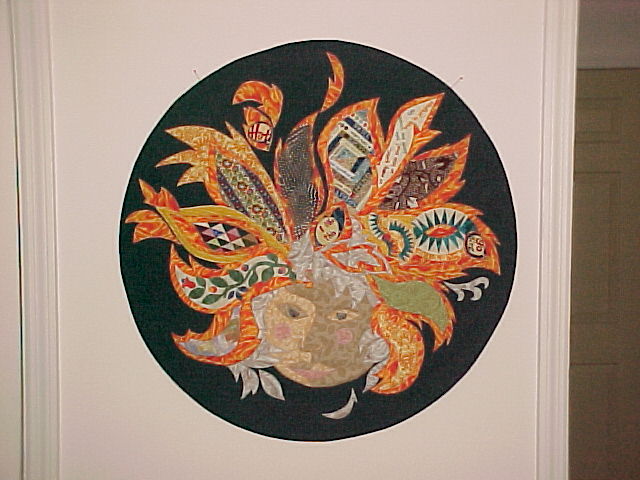It's from the 1964 Joy of Cooking--and you won't find it in any of the newer editions. My dear offspring gave me the latest Joy, and it has some great recipes, but the chapter on breads has quite wasted away. It's a shame. The process is satisfying, the result is delicious, and your house will smell wonderful. And if the Polar Vortex is chilling you to the bone, making bread will warm you up and justify turning on the oven.
People don't always have the ingredients on hand for bread baking, so assembling some of the items might mean extra shopping (or just a delay until your next visit to the grocery store.) If you are not acquainted with the Baking aisle, now's the time. Our Kroger carries King Arthur flour, and WalMart actually has some of the Hodgson flours, but I had to visit my local health food store in order to find rye flour. It's also my source for Bob's Red Mill Old-fashioned Rolled Oats when Kroger's meager 'gourmet section' has sold out. I buy yeast by the jar, but the packets are economical if you only plan to bake occasionally. (I confess that most of my yeast usage is for pizza dough, which is simpler and faster than bread baking; but I digress.)
Make your shopping list from the recipe, and while you're at it, get over any fears you may harbor about yeast. It's not *that* fragile and difficult to handle.
Oh, okay. Here's what you'll need.
2 cups of milk (your choice; I usually use 2% but skim is fine, or reconstitute dried)
Oatmeal
Wheat germ (Kretschmer's comes in a sizable jar but it lasts well)
Flour-- soy, whole-grain rye or whole wheat, and unbleached all-purpose (yes, all three)
Small amounts of brown sugar, cooking oil, salt; one or two eggs, and some solid shortening
Yeast
Two bread pans; these need not be rectangular. I've baked using the round top pan of my double-boiler, in ceramic casserole dishes, and in foil pans from the grocery store.
Put 2 cups of rolled oats into a large bowl. It can be your mixer bowl; whether or not to actually use the mixer and dough hook is up to you. It spares my wrists somewhat, but it's not without its own drawbacks. Add 1/2 cup brown sugar and 2 tsps salt. Scald 2 cups of milk and pour it over the oats and leave it to cool. It takes a good while; do it before having breakfast and dressing, and it will be ready for the next step by the time you are. Don't be tempted to skip this step; the oats need to be softened up. Measure out the other ingredients (amounts given below) and have them ready before you begin mixing.
When you can stick a finger into the liquid without wanting to jerk it back out, it's about right. Too much heat kills yeasts (and people); you want 'warm but not hot.' Now add:
1/4 cup cooking oil (light oil such as canola) to the milk/oat mixture.
Yeast these days is freeze-dried and reliable; I've only had one packet of yeast fail in all these years. Most older cookbooks instruct you to 'proof' the yeast, which means you mix it with some warm water and wait to be sure it will begin multiplying. Nowadays many recipes call for you to mix the yeast in with the first couple of cups of flour (of whatever sort) and skip that step. It works well, but you still have to be sure your liquid ingredients are not too hot. If you want to see the yeast in action, measure 1/4 cup of warm-but-not-hot water into a small bowl and add either a packet of yeast or a scant tablespoon of yeast from your jar. Be sure your measuring spoon is dry! In about 10 minutes you will see that the yeast is foamy; add it to the milk mixture.
Stir in your slightly beaten egg(s) and 1/2 cup wheat germ, plus 1 cup of soy flour and 1 cup of rye (or whole wheat) flour.
 |
| Mixing tools |
Stir well. I use a wooden spoon that is sacred to the task of bread-making; it's never used for any other cooking, and I wash and dry it as soon as the mixing stage is complete.
Now you are going to start adding 3-4 cups of unbleached flour, beginning with 1 cup and then continuing about 1/2 cup at a time. (You need not be precise about this, but you don't want to go much over the 3-4 cup total or your bread will be too dry.) At some point it is going to get difficult to stir, so when you are there, you want to sift some of your flour onto your kneading board (well, I used the smooth counter top, myself) and scrape the sticky dough out of the bowl onto the layer of flour. Sift some more flour on top (to cover) and then upend a bowl over the whole shooting match. Set the timer for 10 minutes. You are going to allow some of the gluten in the mixture to develop; it will make your kneading easier and contribute to the texture of the final product.
Meanwhile, wash the bowl (and your wooden spoon or bread-mixing tool) and then get out your loaf pans. I use vintage FireKing glass loaf pans, but that's just me. Inexpensive metal pans work just fine. Use a blob of Crisco (or whatever solid shortening you prefer, but don't bother using butter) to grease the mixing bowl and your loaf pans. Grease the bowl more lightly, but don't be too sparing with the pans, and be sure you don't miss the corners. I do them all at the same time even though I won't be using the loaf pans for a good while; why get greasy twice?
When the timer goes off, uncover the dough and begin kneading. Basically you are continuing to mix in the rest of the flour you have pre-measured. I'm sure you can find a YouTube video, but in brief, kneading involves lifting the front of the dough ball and pressing it into the center; give it a quarter turn and repeat, and keep going that way. You will be using the heels of your hands, and your fingers will curve together as scoops as you fold the dough on itself. You'll want to keep flouring your hands and the dough ball as you work; in the beginning, you'll need to use generous amounts of flour. I keep a metal pancake turner on hand because whole-grain dough is sticky; I can scrape it off the kneading surface and add flour beneath. The dough will gradually get less sticky as you go along, but it will never lose all of the tackiness the way white bread dough does. This stage will take about 10+ minutes of steady work, but it's rhythmic and soothing, and the dough will gradually begin to feel substantial and springily 'alive.'
Now it's time to let the dough rise. Put the ball into the greased bowl, and then lift it and roll it over so that all surfaces of the dough have a light coating of oiliness. Then wring out a thin dishtowel in warm water and drape it over the top of the bowl (but not touching the dough.) I turn on the oven light and put the dough to rise in this warm, draft-free spot. It will rise in a chilly room, but it will take longer. Don't be tempted to turn on the oven to make the dough rise more quickly; the oven bulb gives off enough warmth. Yeast is a living thing, and if you kill it off before it has done its work, you will get a flat, unsatisfying loaf. You can't really rush this step, which could take up to an hour--more usually 45 minutes. The goal is to allow the dough to double in bulk. (It won't hurt anything if it rises and touches the towel.) If you poke the dough and the indentation of your two fingers doesn't spring back, the rising is at its peak.
Very lightly flour the (cleaned) surface where you did the kneading and dump out the dough. With floured hands, punch the dough down and knead somewhat into a log. Cut the dough in half and form each into a loaf to suit your pans. You are aiming for a smooth top, so you might be folding the ends and sides under as you prepare the loaves.
Now drape the pans with the damp towel again and allow to rise about 30-45 minutes; this time the bread will not quite double in bulk. When it's getting close, preheat the oven to 350F.
Put the bread pans in the hot oven with space between and bake 30-45 minutes. The original recipe said an hour, but I've never had them take that long.
Turn out onto a rack and then right the loaves, elevating the rack so that the bread doesn't sweat; allow the loaves to cool completely before putting into plastic bags to keep, refrigerated.
To slice, use a sawing motion; don't try to just press the knife down as if you were cutting butter or an apple. A wavy-edged bread knife is a useful tool (works well on fresh tomatoes, cake, etc.) and will give you many years of service. I've had mine...oh, 40 years or so.

.JPG)




No comments:
Post a Comment